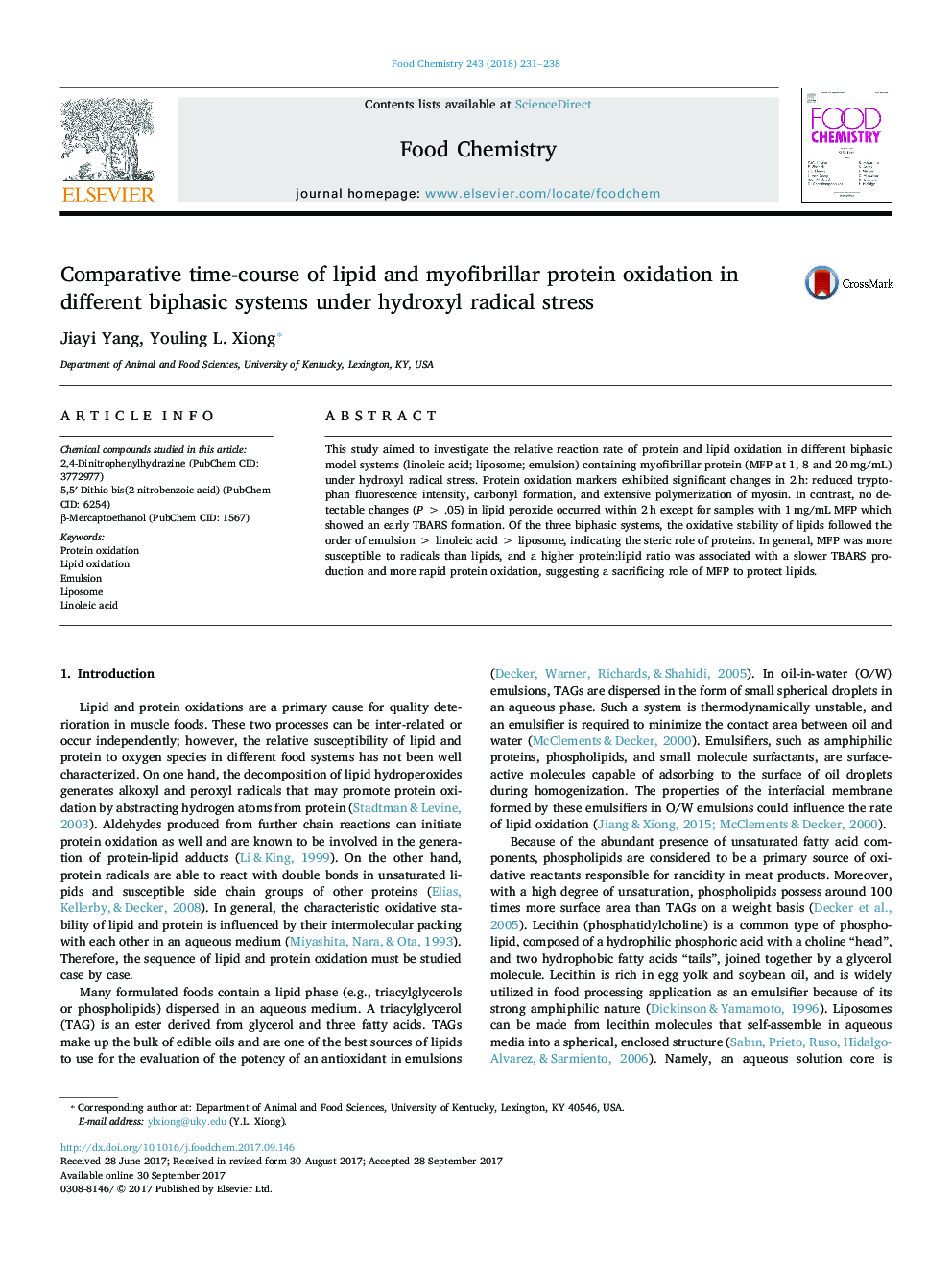| Article ID | Journal | Published Year | Pages | File Type |
|---|---|---|---|---|
| 5132551 | Food Chemistry | 2018 | 8 Pages |
â¢Lipid oxidation was assessed in different lipid-protein dispersions.â¢Interfacial proteins were strongly protective of lipid against oxidants.â¢Emulsions are more oxidatively stable than liposome and free fatty acids.
This study aimed to investigate the relative reaction rate of protein and lipid oxidation in different biphasic model systems (linoleic acid; liposome; emulsion) containing myofibrillar protein (MFP at 1, 8 and 20â¯mg/mL) under hydroxyl radical stress. Protein oxidation markers exhibited significant changes in 2â¯h: reduced tryptophan fluorescence intensity, carbonyl formation, and extensive polymerization of myosin. In contrast, no detectable changes (Pâ¯>â¯.05) in lipid peroxide occurred within 2â¯h except for samples with 1â¯mg/mL MFP which showed an early TBARS formation. Of the three biphasic systems, the oxidative stability of lipids followed the order of emulsionâ¯>â¯linoleic acidâ¯>â¯liposome, indicating the steric role of proteins. In general, MFP was more susceptible to radicals than lipids, and a higher protein:lipid ratio was associated with a slower TBARS production and more rapid protein oxidation, suggesting a sacrificing role of MFP to protect lipids.
